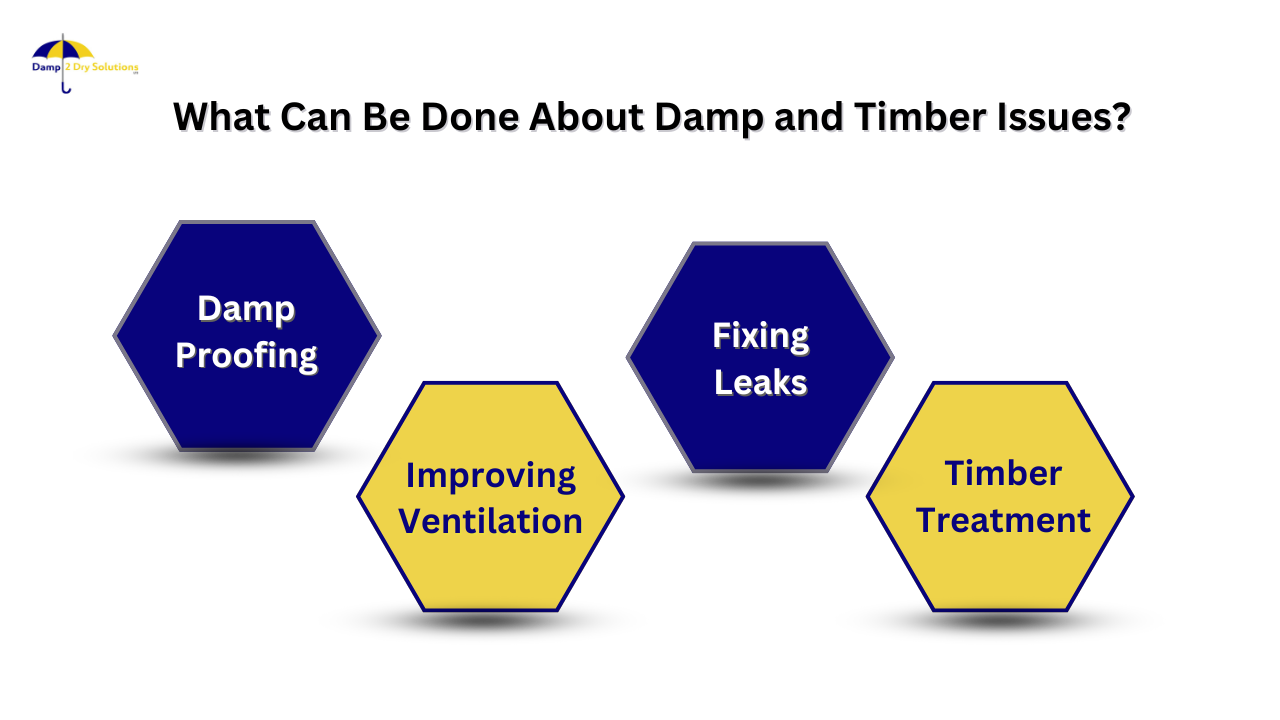
If you’re living in Manchester, Cheshire, Warrington or anywhere in the UK, you’ve probably noticed how much energy bills have skyrocketed in recent times.
With the rising cost of living, many of us are looking for ways to cut down on household expenses, and one area that might surprise you is how much damp and timber problems could be inflating your bills.
Fixing these issues is like plugging a hole in your wallet, once they’re resolved, you could see a dramatic improvement in your home’s efficiency and a decrease in your energy bills.
Let’s explore how.
What Are Damp and Timber Problems?
Damp is the build-up of moisture in your property, which can come from condensation, leaks, or poor ventilation. This can lead to mould, mildew, and structural issues. Timber problems often go hand-in-hand with damp, especially in older homes.
When the wood in your home is exposed to moisture for too long, it can rot, weaken, and even become a hotspot for pests like woodworm.
While it may seem like these are just structural problems, the impact on your energy efficiency is significant.
Why Damp Makes Your Home Energy Inefficient
Damp walls are terrible at retaining heat. Imagine trying to stay warm in wet clothes—it’s nearly impossible. Similarly, when the walls of your home are damp, they lose heat much more quickly.
This means your heating system has to work harder to maintain a comfortable temperature, leading to higher energy consumption and, of course, bigger bills.
In fact, damp homes are much less energy-efficient, and with around 21% of UK homes suffering from damp, this is a widespread issue that directly affects energy bills.
The Vicious Cycle: Damp Makes Things Worse
Not addressing damp can create a vicious cycle. As moisture builds up in your home, it becomes harder to heat. In turn, condensation increases, worsening the damp, leading to even more heat loss. This continuous loop will keep driving your energy bills higher and higher until the root cause, damp is tackled.
Timber Problems and Heat Loss
Now let’s talk timber. When wooden structures in your home are affected by moisture, they can rot or become infested with pests like woodworm. This not only weakens the structure of your home but also creates draughts and heat loss. Crumbling wooden window frames or rotten beams let cold air in and warm air out, making your home much harder to heat efficiently.
By repairing timber issues, you can restore your property’s ability to retain heat, preventing your heating system from working overtime.
How Fixing Damp and Timber Problems Lowers Your Energy Bills
When damp and timber issues are resolved, your home becomes more energy-efficient, which can significantly reduce your heating costs. Here’s how:
- Improved Insulation: Damp walls don’t insulate well, but once you treat the damp, your insulation can do its job properly. A well-insulated home keeps the heat in, meaning you won’t have to turn the heating on as often.
- Lower Heat Loss: Damp walls and rotten timber are prime spots for heat to escape. Fixing these issues helps your home retain warmth for longer periods, meaning your heating system doesn’t have to work as hard to keep your house cosy.
- Preventing Structural Damage: Timber problems like rot can cause structural weaknesses that lead to draughts and cold spots. By fixing the timber, you’re effectively sealing your home against heat loss.
What Can Be Done About Damp and Timber Issues?

The good news is that damp and timber issues are fixable. Here’s what you can do to solve these problems and improve your home’s energy efficiency:
- Damp Proofing: One of the most common solutions is to install a damp-proof course (DPC), which prevents moisture from rising up through your walls. If your property already has one, it might need to be checked to ensure it’s still effective. Damp-proofing specialists can also help with solutions like waterproofing and treating mould-affected areas.
- Improving Ventilation: Poor ventilation is a major cause of damp in UK homes. Installing ventilation systems in problem areas like kitchens, bathrooms, and basements can drastically reduce moisture build-up.
- Fixing Leaks: Damp can also be caused by leaking gutters, pipes, or roofs. Identifying and fixing these leaks is crucial to prevent further moisture damage.
- Timber Treatment: If your timber is affected by rot or pests, it’s essential to treat it before the damage becomes too extensive. Specialist treatments for wood can eradicate pests and fungi while strengthening weakened structures.
The Long-Term Benefits of Fixing Damp and Timber Problems
Once you’ve dealt with damp and timber issues, you’ll immediately start to see benefits beyond just lower energy bills. Your home will feel warmer and more comfortable, and you’ll also be protecting the structural integrity of your property. This can save you money in the long run, as you’ll avoid costly repairs down the road.
And let’s not forget the health benefits. Damp homes are notorious for causing respiratory issues like asthma and allergies.
Mould and mildew from damp can make your living environment not only uncomfortable but also dangerous, especially for vulnerable family members like children and the elderly.
The Financial Impact on Energy Bills
In terms of cold, damp homes, it’s estimated that 8.3 million adults in the UK are living in these conditions, and this has a direct impact on health and finances.
Cold homes are much harder to heat efficiently, meaning that addressing these underlying damp issues can save hundreds of pounds in energy costs each year.
Research from Friends of the Earth suggests that insulating and fixing these problems across the UK could save the NHS billions in cold-related health issues, not to mention the potential savings in household energy bills.
Don’t Wait Until It’s Too Late
So, if your home suffers from damp or timber problems, don’t wait for your energy bills to skyrocket before taking action. Fixing these issues is one of the most effective ways to lower your energy consumption and create a healthier, more comfortable living environment.
Think of it this way: ignoring damp is like trying to heat a room with the window wide open, no matter how hard you try, the warmth just keeps escaping. By fixing the problem at its source, you can finally start seeing real savings on your energy bills.
In conclusion, addressing damp and timber problems isn’t just about improving your home’s structural integrity, it’s a crucial step towards a more energy-efficient, cost-effective household. So, don’t put it off-tackle those problems now and enjoy a warmer, healthier home that won’t drain your bank account.
For a comprehensive inspection of your property, Damp 2 Dry Solutions Ltd offers expert Damp and Timber Surveys tailored to identify and resolve moisture-related issues.
Whether you’re dealing with rising damp, penetrating damp, or timber decay like wet or dry rot, their certified specialists can assess the condition of your home and provide a detailed report with recommendations for effective treatment.
Don’t let damp problems linger, schedule a survey today to safeguard your property’s health and energy efficiency.
